Dance, an art form as old as civilization itself, has been integral to human expression for millennia. Evidence suggests dance existed as far back as 30,000 years ago, evolving and diversifying across cultures and eras into the myriad styles we recognize today. From ritualistic movements to social gatherings and theatrical performances, dance has served various purposes, reflecting societal values and artistic innovation.
Today, the landscape of dance is incredibly rich, encompassing a wide array of genres, each with its unique history, techniques, and cultural significance. Whether you’re a seasoned dancer, a curious beginner, or simply an admirer of movement, understanding the Different Forms Of Dance can deepen your appreciation for this dynamic art.
Here are some of the most popular and influential forms of dance:
A Journey Through Dance Genres
1. Ballet: The Epitome of Classical Grace
Ballet, born in the Italian Renaissance courts and refined in France and Russia, stands as a cornerstone of Western theatrical dance. Initially a courtly pastime, it transformed into a public performance art form, characterized by its rigorous technique, ethereal grace, and storytelling through movement. Ballets are typically choreographed to classical music and presented in elaborate productions, though minimalist stagings also exist.
Ballet is renowned for its highly technical vocabulary, including five fundamental positions, graceful arm movements (port de bras), and demanding legwork such as turnout, pointe work for women, and spectacular jumps and turns for men. It has branched into various subgenres, including classical ballet, romantic ballet, neoclassical ballet, and contemporary ballet, each reflecting different stylistic and thematic approaches.
Globally recognized methods like Cecchetti, Bournonville, Vaganova, French School, Royal Academy of Dance, and Balanchine underscore ballet’s structured and academic nature, making it a discipline studied at prestigious dance institutions worldwide.
For ballet dancers, the right flooring is crucial. Harlequin Floors offers specialized ballet dance floors designed to provide the necessary traction and support for complex movements while minimizing the risk of injury. Harlequin Cascade is a popular choice, often paired with sprung floors like those also offered by Harlequin, ensuring a safe and responsive surface. Additionally, Harlequin provides professional ballet barres in wall-mounted, floor-mounted, and freestanding options to support dancers’ training.
 Ballet dancers performing on a Harlequin Cascade floor, showcasing the elegance and precision of ballet.
Ballet dancers performing on a Harlequin Cascade floor, showcasing the elegance and precision of ballet.
2. Ballroom: Partnered Elegance and Rhythmic Precision
Originating in 16th-century France as a social partner dance, ballroom has evolved into a diverse genre encompassing both social and competitive forms. Often used as a general term for partner dancing, ballroom dance today is categorized into two primary styles: Standard (or Smooth) and Latin (or Rhythm).
The Standard category includes dances like the Waltz, Tango, Foxtrot, and Viennese Waltz, characterized by elegant gliding movements and close partner connection. Latin dances, such as the Cha-Cha, Samba, Rumba, Paso Doble, and Jive, are more energetic and rhythmic, emphasizing hip movements and passionate expression. Ballroom dance is a globally recognized competitive dance form known as dancesport, featuring intricate choreography and demanding technical skill.
Given the variety of styles within ballroom, dancers require a versatile dance floor. Harlequin Fiesta and Harlequin Liberty Ballroom sprung floors are engineered to provide the optimal surface for both Standard and Latin styles, offering the right balance of slip resistance and responsiveness. Notably, Harlequin Liberty Ballroom is the floor of choice for the BBC’s ‘Strictly Come Dancing’, highlighting its quality and performance standards.
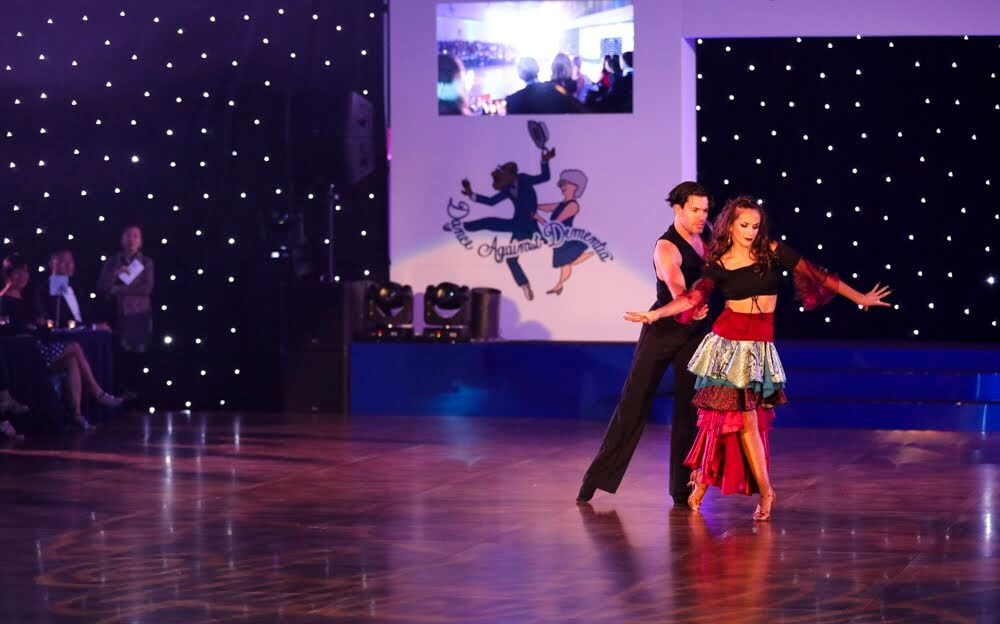 Ballroom dancers in elegant attire performing a passionate routine on a Harlequin Liberty Ballroom floor.
Ballroom dancers in elegant attire performing a passionate routine on a Harlequin Liberty Ballroom floor.
3. Contemporary: Expressive Freedom and Innovation
Emerging in the mid-20th century, contemporary dance broke away from the rigid conventions of classical ballet and modern dance, embracing freedom of expression and innovation. It draws inspiration from various genres, including ballet, modern, and jazz, integrating elements from each while forging its own distinct identity. Contemporary dance is characterized by its fluidity, versatility, and emotional depth.
Contemporary dance emphasizes a strong core, dynamic use of weight, and a connection to the floor. Key principles include contract and release, fall and recovery, and varied dynamics and rhythms, often incorporating unpredictable changes in tempo and phrasing. It allows for a wide range of movements, from lyrical and flowing to sharp and percussive, reflecting diverse choreographic approaches and personal interpretations.
The dynamic and often grounded nature of contemporary dance necessitates a floor that provides shock absorption and support. Harlequin Activity sprung floors, known for their innovative ‘triple sandwich’ construction, are ideal for contemporary dancers, especially when paired with Harlequin vinyl surfaces, offering protection and comfort for intricate movements and floor work.
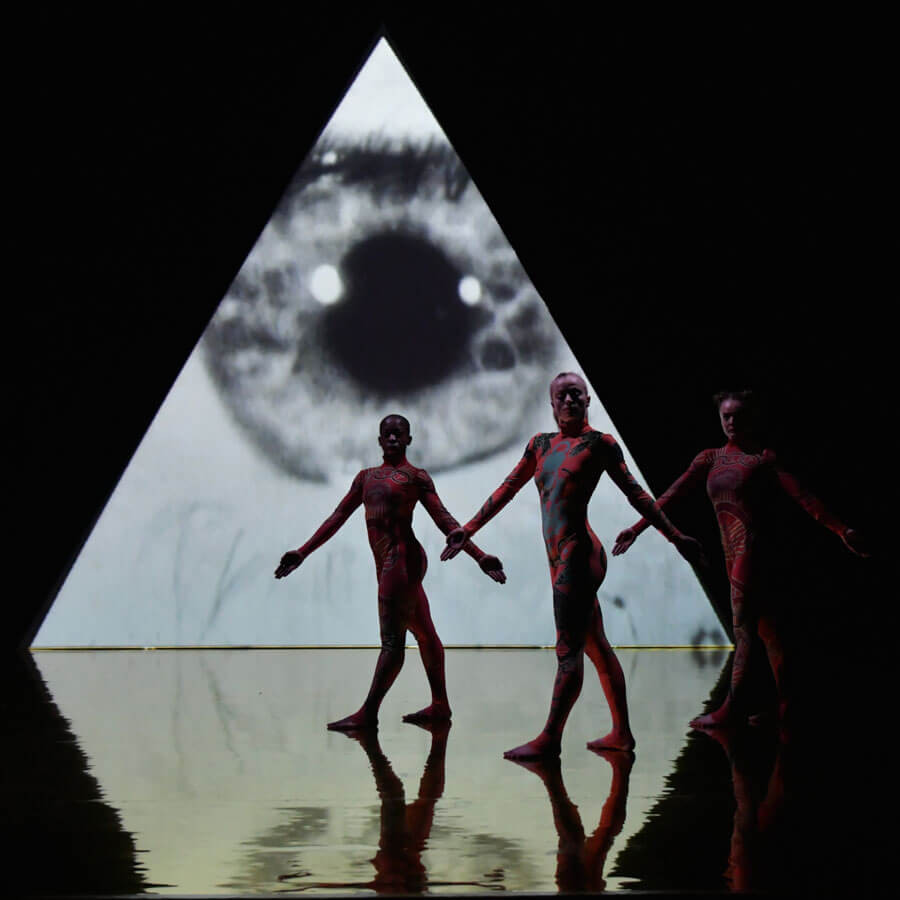 Contemporary dancer in a dynamic pose on a Harlequin Hi-Shine floor, highlighting the expressive and fluid nature of the genre.
Contemporary dancer in a dynamic pose on a Harlequin Hi-Shine floor, highlighting the expressive and fluid nature of the genre.
4. Hip Hop: Urban Rhythms and Street Style
Hip hop dance encompasses a broad spectrum of street dance styles that originated alongside hip hop music and culture in the early 1970s in New York City and California. Rooted in Funk and breakbeat music, hip hop dance is characterized by its energetic movements, improvisational nature, and connection to urban culture.
Key styles within hip hop include Breaking (breakdancing), Locking, and Popping, each with its own set of techniques and aesthetics. Breaking features acrobatic power moves, freezes, and footwork. Locking is characterized by sharp, distinct movements and freezes, while Popping involves isolations and illusions of robotic movements. Emerging from these foundational styles are derivative forms like Memphis Jookin’, Turfing, Jerkin’, and Krumping, often popularized through music videos and social media. Hip hop dance thrives in diverse environments, from outdoor spaces and dance studios to competitive battles.
Improvisation and “battling” are integral to hip hop culture, fostering creativity and community. Harlequin Freestyle dance floors are specifically engineered to meet the demands of hip hop and street dance, providing the right amount of grip and slip for dynamic movements and footwork.
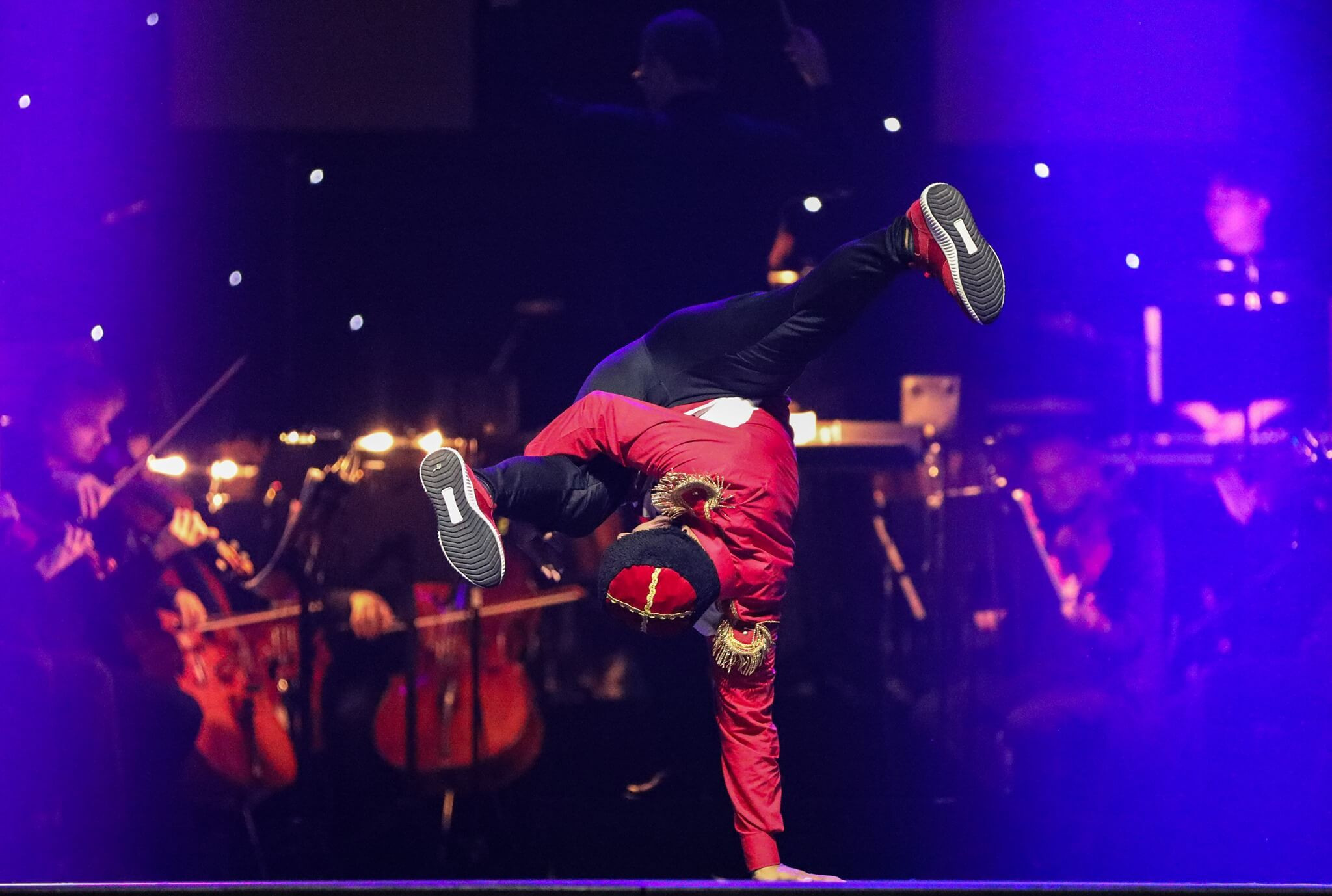 Hip hop dance crew performing energetic moves on a Harlequin FreeStyle floor, showcasing the urban and dynamic style of hip hop.
Hip hop dance crew performing energetic moves on a Harlequin FreeStyle floor, showcasing the urban and dynamic style of hip hop.
5. Jazz: Syncopated Rhythms and Expressive Improvisation
Jazz dance is deeply rooted in African traditions brought to the Americas in the 17th century. Evolving from African American vernacular dance styles alongside jazz music in the early 20th century, jazz dance is characterized by its syncopated rhythms, isolations, and improvisational elements. It’s a vibrant and dynamic form that reflects the energy and spirit of jazz music.
Early jazz dances like the Charleston, Shimmy, and Lindy Hop gained immense popularity in jazz clubs and social gatherings. Today, jazz dance encompasses a wide range of styles, from lyrical and Broadway jazz to funk jazz and contemporary jazz, each with its distinct flavor and technical focus. Improvisation, dynamic movements, and expressive storytelling remain central to jazz dance.
For jazz dancers, a floor that supports both dynamic movement and nuanced footwork is essential. Harlequin Studio and Harlequin Allegro vinyl floors are excellent choices for jazz practice and performance, providing a responsive and comfortable surface that enhances dancers’ connection to the music and movement.
 Jazz dancers in mid-air jump on a Harlequin Studio floor, capturing the energy and dynamism of jazz dance.
Jazz dancers in mid-air jump on a Harlequin Studio floor, capturing the energy and dynamism of jazz dance.
6. Tap Dance: Percussive Rhythms and Footwork Artistry
Tap dance is a percussive dance form distinguished by the rhythmic sounds created by metal taps on the dancer’s shoes striking the floor. It’s a captivating blend of dance and music, where the dancer becomes a percussive instrument, creating intricate rhythms and patterns with their feet.
Tap dance evolved from a fusion of African rhythms, Irish step dance, and English clog dancing in the United States during the 19th century. It encompasses various styles, including rhythm tap, classical tap, Broadway tap, and flamenco tap, each showcasing different rhythmic complexities and performance contexts. Often featured in musical theatre, tap dance emphasizes choreography, formations, and clear, crisp sounds.
Achieving optimal sound quality and protecting dancers’ joints are key considerations for tap dance flooring. Harlequin Fiesta is a popular choice for tap dance studios and performance spaces, providing a surface that enhances the clarity of tap sounds. When paired with a sprung floor like Harlequin Liberty, it offers both sound quality and shock absorption, ensuring dancers can perform with confidence and comfort.
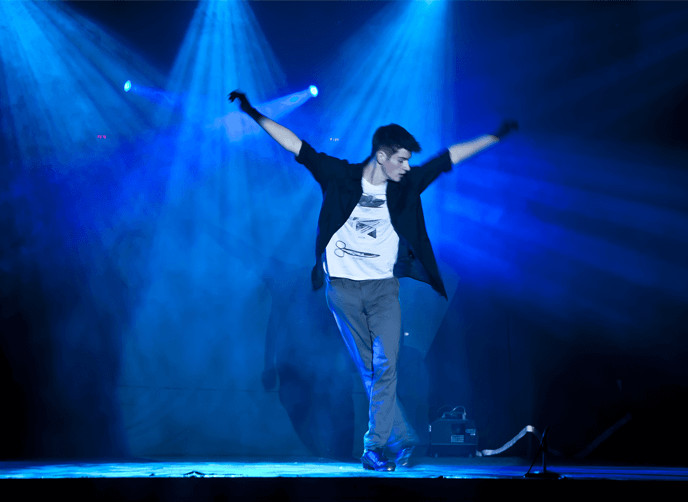 Tap dancers in formation creating rhythmic sounds on a Harlequin Fiesta floor.
Tap dancers in formation creating rhythmic sounds on a Harlequin Fiesta floor.
7. Folk Dance: Cultural Heritage and Community Celebration
Folk dance is a broad term encompassing traditional dances that reflect the cultural heritage and social customs of specific communities or regions. Performed globally, folk dances serve as expressions of emotions, storytelling, historical events, and aspects of daily life, often passed down through generations.
The diversity of folk dance is immense, with examples like Bharatanatyam from India, Samba from Brazil, Hula from Hawaii, and countless others across the globe. Even within a single country, multiple folk dance variations can exist, representing different regional traditions or occasions, such as dances for harvests, weddings, or religious ceremonies. Folk dances are often participatory and inclusive, performed at public events and festivals, inviting people of all skill levels to join in the celebration. Traditional music and costumes are integral components of folk dance performances, enhancing the cultural experience.
For folk dance events in public venues, portable performance floors and dance floor hire services, like those offered by Harlequin Floors, provide versatile and safe surfaces for diverse dance styles and community participation.
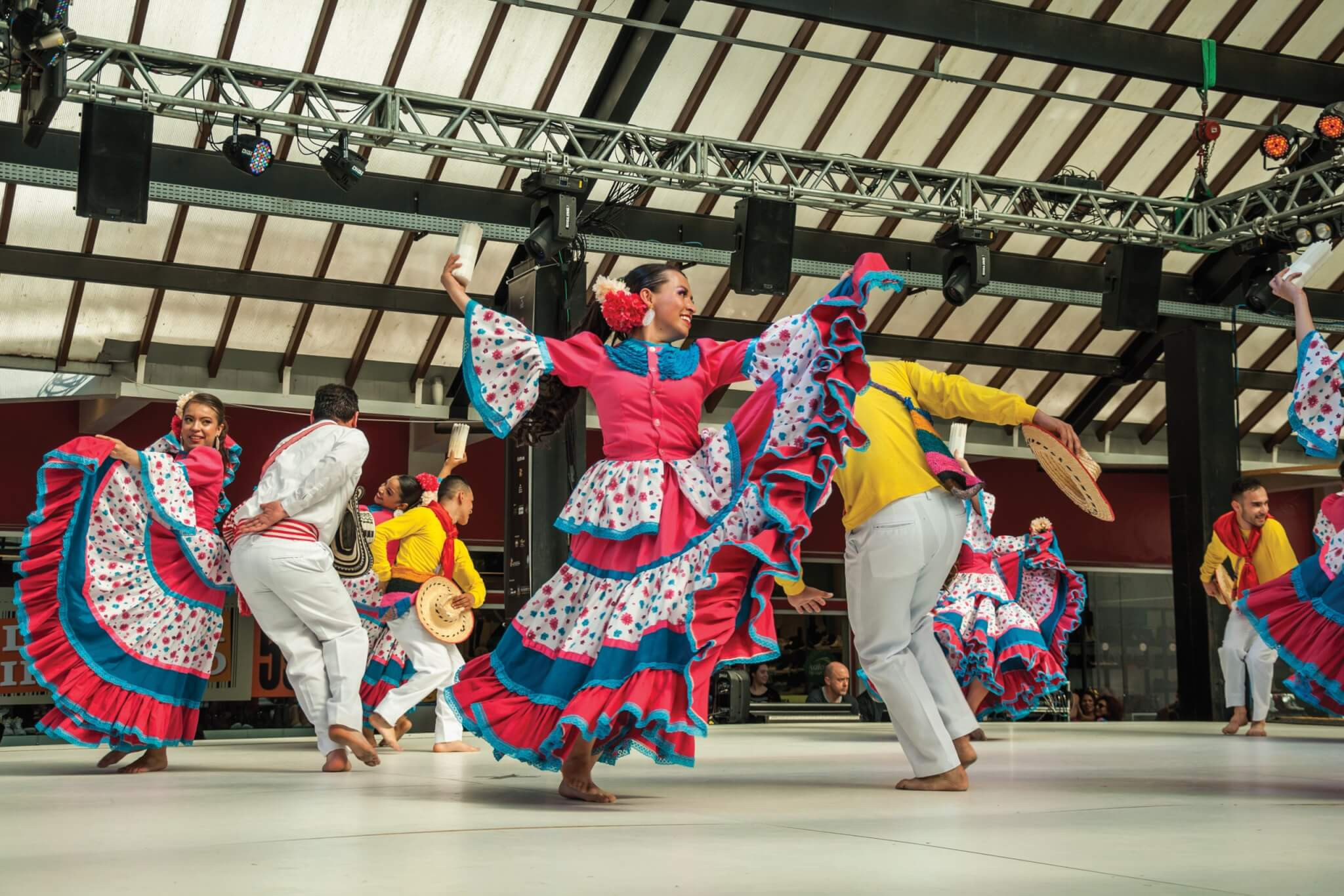 Group of people in traditional clothing performing a folk dance on a portable Harlequin floor at an outdoor festival.
Group of people in traditional clothing performing a folk dance on a portable Harlequin floor at an outdoor festival.
8. Irish Dance: Spirited Footwork and Celtic Tradition
Originating in Ireland, Irish dance is a vibrant and energetic traditional dance form that has gained global popularity. Characterized by its intricate footwork, upright posture, and distinctive costumes, Irish dance is often associated with shows like Riverdance, which have showcased its spectacular formations and technical precision.
Irish dance encompasses both social and performance styles. Social Irish dances, like céilí dances, are group dances enjoyed at gatherings and celebrations. Performance styles include solo stepdance and group choreography, often featured in competitions and stage shows. Traditional Irish music, characterized by lively melodies and rhythms, is essential to Irish dance, accompanying both social and performance settings.
For Irish dance studios and performance spaces, specialized sprung dance floors are recommended to support the demanding footwork and impact of the dance form. Harlequin Standfast vinyl floor, when paired with a Harlequin sprung floor, provides an excellent surface for Irish dancers, offering durability and a secure footing for intricate steps and leaps.
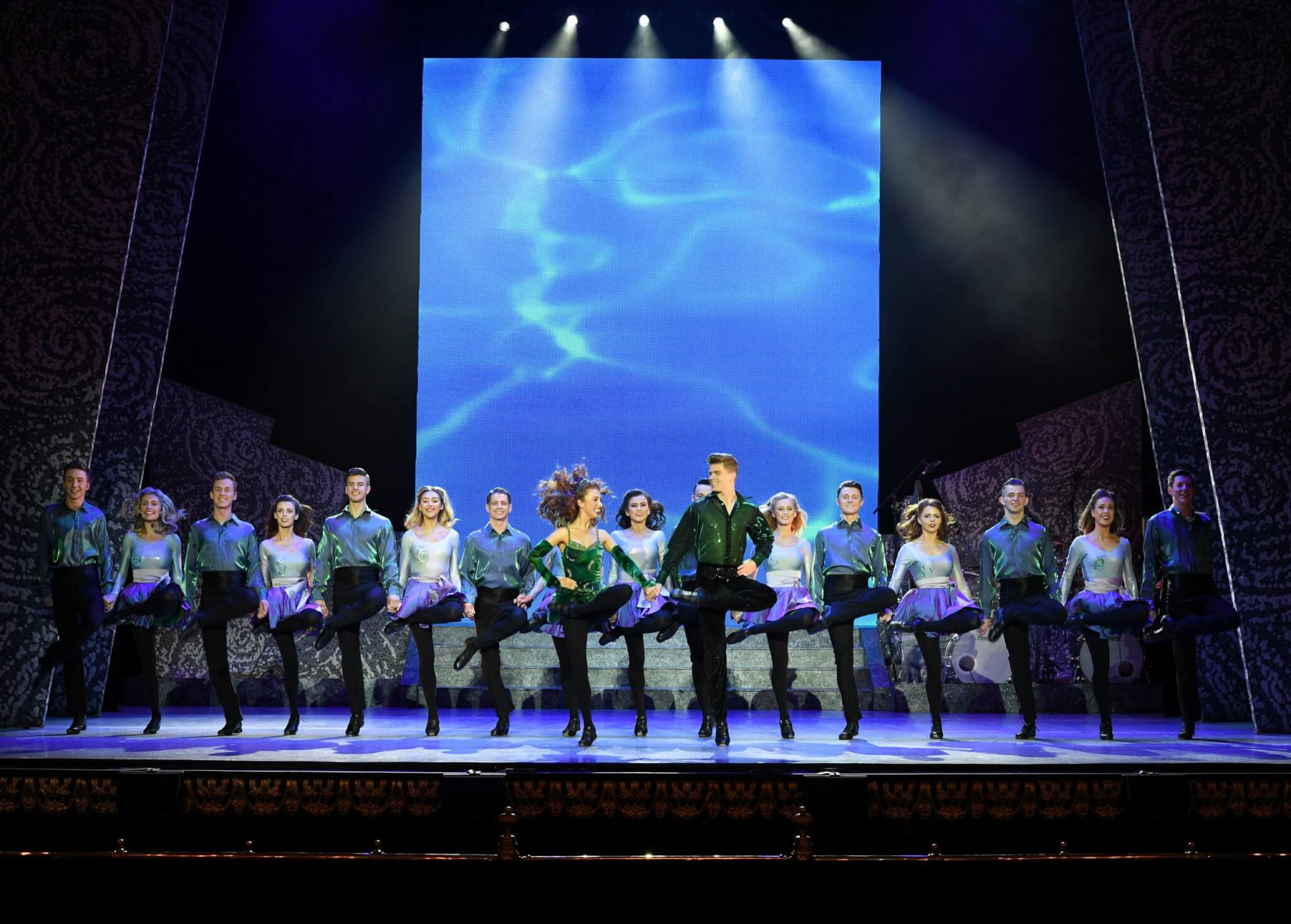 Irish dancers in traditional costumes performing synchronized steps on a Harlequin Standfast floor.
Irish dancers in traditional costumes performing synchronized steps on a Harlequin Standfast floor.
9. Modern Dance: Rejecting Tradition, Embracing Individuality
Modern dance emerged in the late 19th and early 20th centuries in Western countries like the USA and Germany as a rebellion against the strict conventions of classical ballet. Pioneers of modern dance sought to express themselves more freely, rejecting rigid techniques and embracing personal interpretation and emotional expression.
Modern dance emphasizes a dancer’s individual interpretation of music and feeling, prioritizing expressive movement over prescribed steps. It explores a wider range of movements than ballet, including floor work, pedestrian movements, and unconventional shapes. Bare feet, loose costumes, and a focus on natural and expressive movement are hallmarks of early modern dance. Today, modern dance is a broad and evolving genre, encompassing diverse styles and approaches.
The freedom and versatility of modern dance make it adaptable to various flooring surfaces. Harlequin’s printed vinyl performance floors offer a unique option for modern dance, allowing for customized designs that enhance the visual storytelling and artistic expression of performances. Many of Harlequin’s vinyl dance floors are suitable for modern dance, providing a comfortable and responsive surface for diverse movement vocabulary.
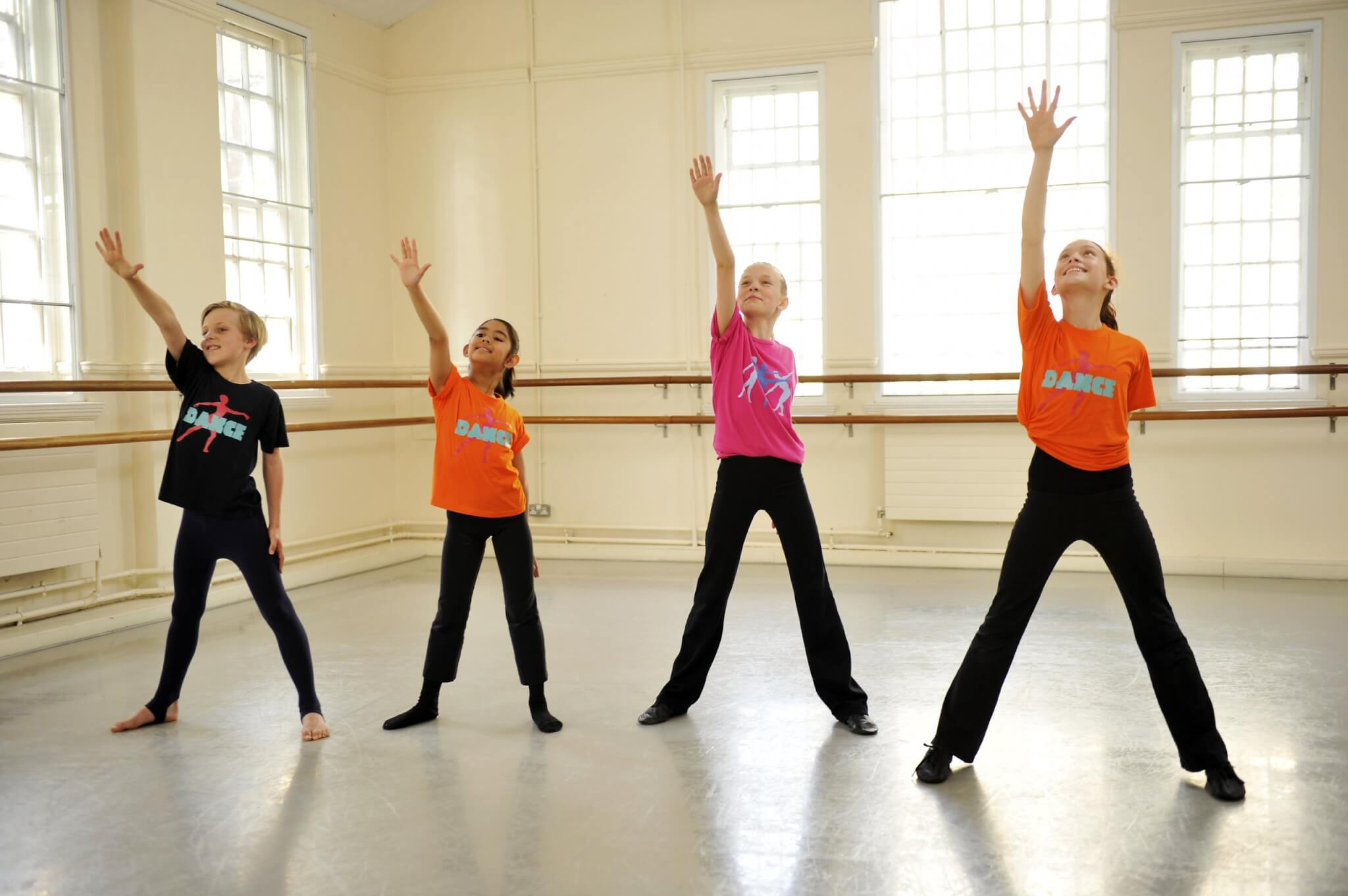 Modern dancer in an expressive pose on a Harlequin printed vinyl floor, demonstrating the freedom and artistry of modern dance.
Modern dancer in an expressive pose on a Harlequin printed vinyl floor, demonstrating the freedom and artistry of modern dance.
10. Swing Dance: Joyful Partnering and Rhythmic Energy
Swing dance emerged during the 1920s to 1940s alongside the rise of swing jazz music in America. Characterized by its upbeat tempo, партнерing, and improvisational spirit, swing dance is a joyful and social dance form that embodies the energy of the swing era.
Popular swing dance styles include Lindy Hop, Charleston, Jitterbug, and Balboa, each with its unique steps and rhythms. Swing dances are often partnered, emphasizing connection, improvisation, and playful interaction between dancers. Swing music, typically played by big bands, provides the infectious rhythms and melodies that drive swing dance. Swing dance continues to be enjoyed socially and competitively worldwide.
For swing dancers, a floor that allows for both smooth gliding movements and energetic steps is important. Harlequin Reversible Pro vinyl floors, with their slip-resistant surface, are well-suited for swing dance, providing a safe and responsive surface for partner work and dynamic footwork.
Conclusion: The Diverse World of Dance
This exploration of different forms of dance reveals the vast and vibrant landscape of this art form. From the classical precision of ballet to the urban energy of hip hop, each genre offers a unique way to express oneself, connect with others, and celebrate movement. Whether you are a dancer or an enthusiast, understanding the different forms of dance enriches your appreciation for the artistry, history, and cultural significance of dance.
Harlequin Floors supports dancers of all styles with a range of professional dance floors and equipment, suitable for studios, stages, and home practice. From home practice equipment to professional dance floor installation services, Harlequin provides solutions for every dance need.
Contact us online to learn more about our dance flooring solutions and how we can support your dance journey.
